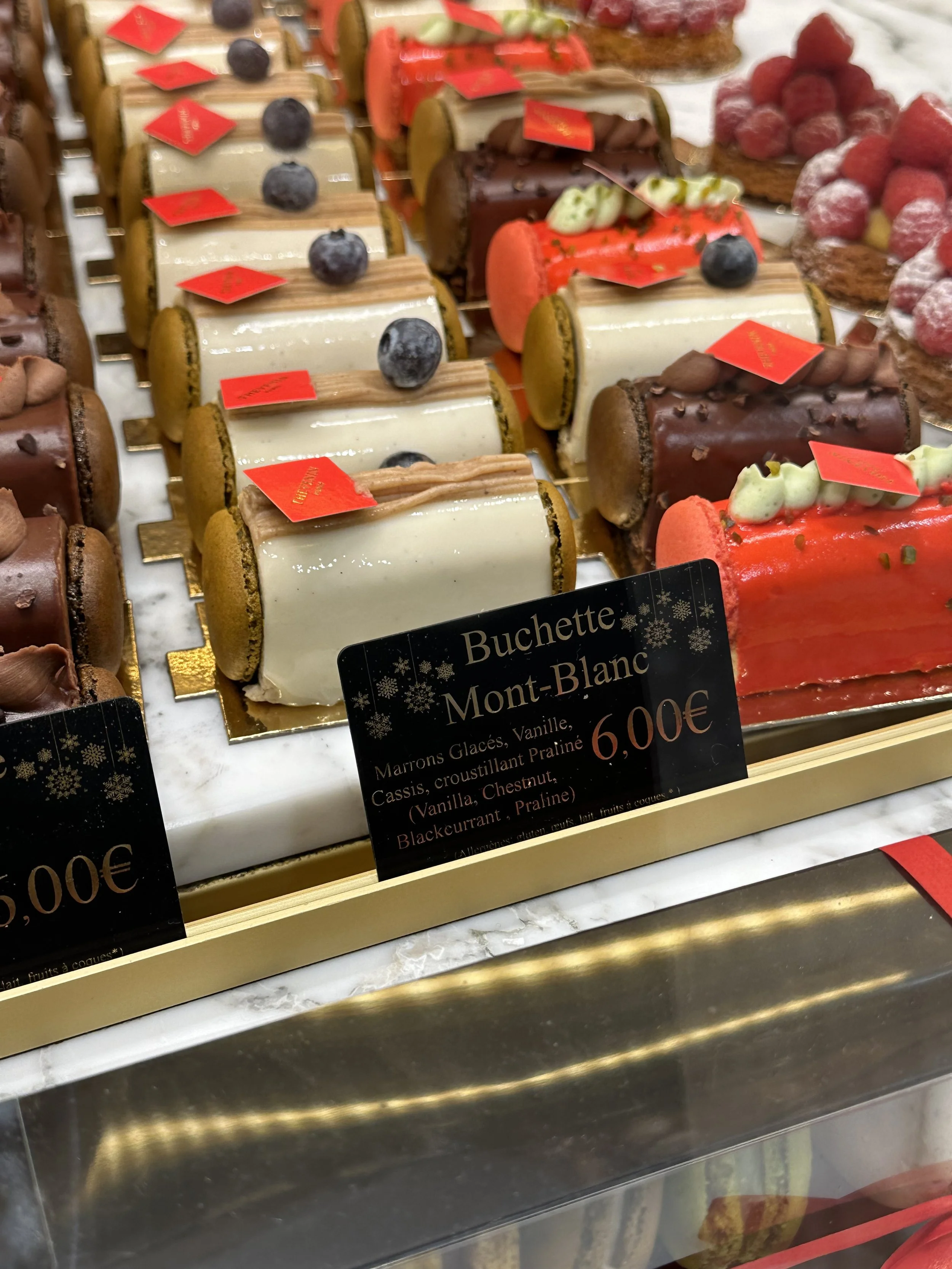Oh the many patisseries of Paris, those lovely welcoming windows that tease you with tasty treats. Of all the things my grandmother loves about Paris, it would be the pastries that are at the top of her list. I could have a personal meeting with Marie Antoinette, but what kind of pastry we ate would be what she would want to know. I do love a light-as-air Saint Honoré or a Mille Feuille with its layers of pastry cream, but I would rather have a platter of cheese any day. I would just never have told her that. Every year on Christmas Eve in Provence after their Christmas dinner they embrace the sweeter side of life.
Les treize desserts de Noel, is the tradition of having thirteen desserts that represent Jesus and the twelve apostles. Before you stop reading and book that flight to get to Provence tonight, these aren’t the pastry cream-rich desserts. They vary from town to town but most will include a variation of nuts, fruits, and specialties of the region each representing a piece of their faith.
The first four items represent the four monastic communities. Walnuts for St Augustin, almonds for Carmelites, raisins for Dominicans, and dry figs for the Franciscans. Next comes, pomme à l’huile, the olive oil flatbread eaten with grape jam. Two different nougats, Nougat de Montelimar, the white nougat symbolizes the good with pistachios, pine nuts, and hazelnuts, and black nougat represents the evil with caramelized honey cooked with almonds. The bulk of the thirteen includes dried plums, dates, quince fruit paste, candied melons, pain d’epice, Oreillettes, Calisson d’Aix en Provence, plenty of grandma’s favorite marzipan, and finishing with seasonal fruit. It all ends with a Buche de Noel and the desserts are left on the table for three days. Joyeaux Réveillon de Noel to all and to all a good night. Now how about the thirteen cheeses of New Year’s Eve
12 days of Christmas
You thought Christmas ended 11 days ago but I have one more story for you. Do you know the little diddy “The 12 Days of Christmas”? Well, guess what, the 1st day starts December 26th! Shocking right? Although it has nothing to do with turtle doves.
Going way back to the year 567 the Council of Tours proclaimed that the period between Christmas and the Feast of the Epiphany would be the 12 days of Christmas. There is more on the Epiphany tomorrow. In the Eastern Orthodox religion, the 12 days in-between were all feast days starting with Saint Etienne on the 26th, Saint Sylvester on the 31st, and the Virgin Mary on the 1st. It all ends with the Magi’s and some cake.
There is one story that each line of the 12 Days of Christmas is somehow related to the bible and a code to teach people Christianity in places not open to it but that has been found over and over not to be the case.
Maybe this means there should be more presents and celebrations each day to help survive those first days of the year?
As for the song it first appeared in 1780 in the British book, Mirth without Mischief as a poem but it most likely is older than that and French in origin, bien sûr! It wasn’t set to music until the 20th century, and it sticks with you forever.
Also in some places, it’s okay to still have your Christmas tree up until after tomorrow, so sit back down with a glass of wine and enjoy the glow of twinkly lights for another evening.
On January 6 the celebration of the Epiphany marks the visit of the Magi or Three Kings that brought the gifts to Christ. It also marks the conclusion of the 12 days of Christmas that ends the night before. But more importantly, it's about a delicious French pastry, the Galette des Rois.
Celebrating the Epiphany with the Galette dates back to the 16th century but fell in and out of popularity in the 17th century when the priests of Saint-Germain and Louis XIV considered it a pagan ritual. Nevertheless, the people cannot be parted from the pastries for long, so they decided to create la fete du bon voisinage or the neighborly relations day. And when the king or royalty sunk in popularity during the French Revolution it became the Gateau de L'Egality or the equality cake.
In Paris and northern France, it's created with flaky puff pastry, filled with almond frangipane, and hidden inside a lucky charm or "une fève". The youngest person is to sit under the table and call out who gets the first slice, and each thereafter. Whoever finds the charm gets to wear the crown for the day.
I prefer to celebrate with a tiara because a little sparkle makes every day better. It always reminds me of my great-grandmother who would wrap dimes in tin foil and hide them inside cakes when I was little, it is always best to find them before you bite into them. You can easily make this wonderful and simple dessert, tiara not included.




